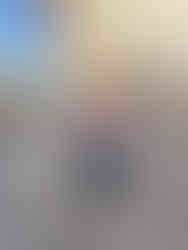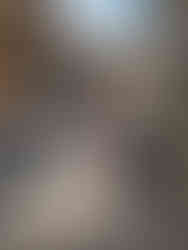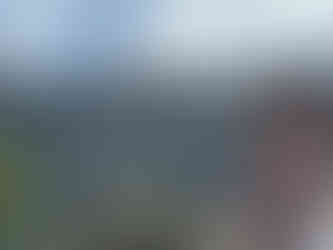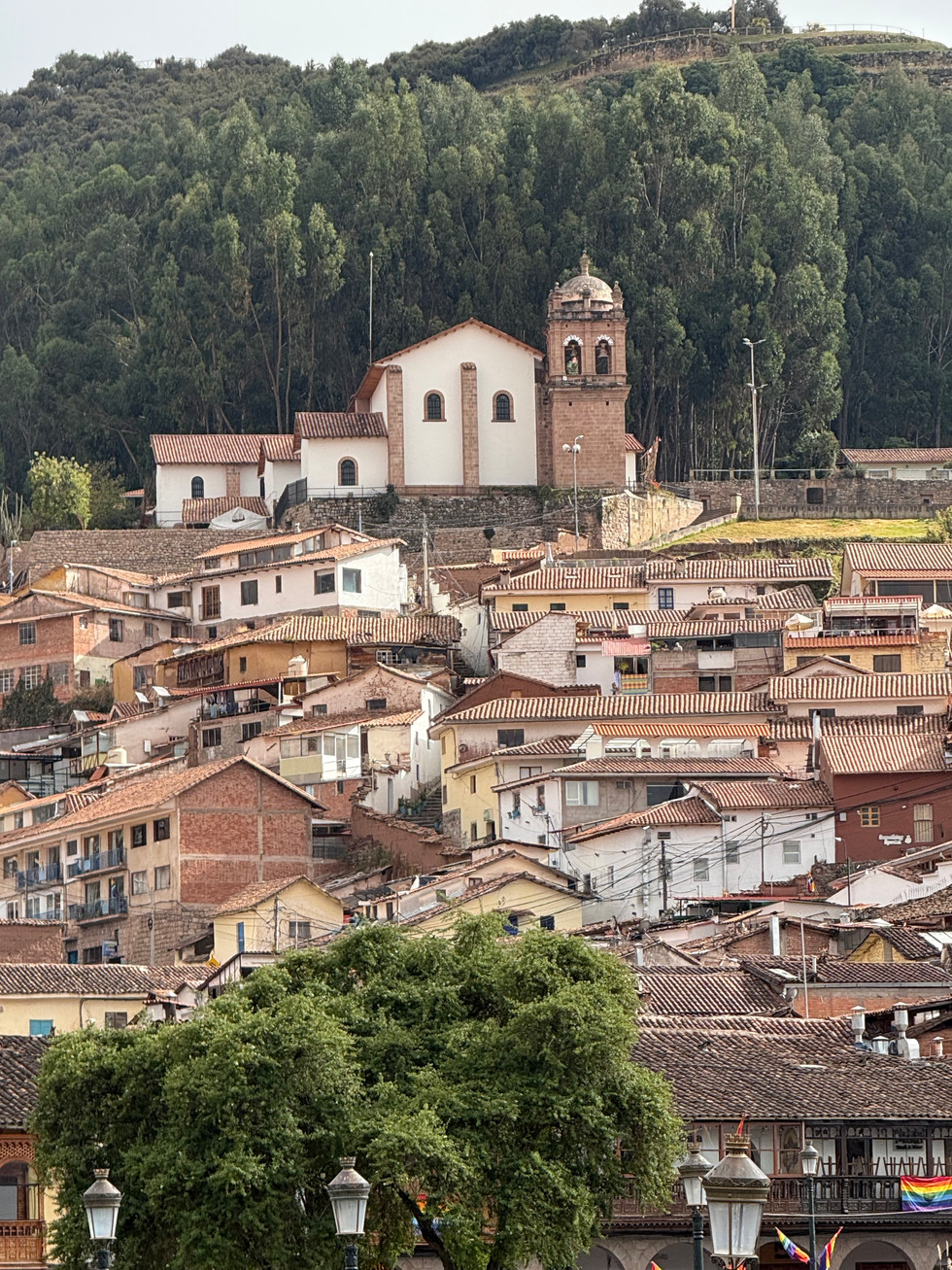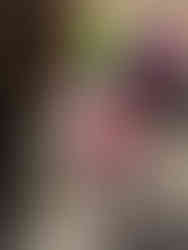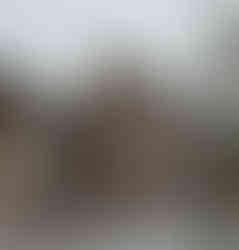Three Days in Cusco, Peru
- ellen
- Jul 3
- 5 min read

Cusco is not for the faint of heart. About 700 miles southeast of Lima and sitting in the Andes Mountains at just over 11,100 feet, most people need to acclimate to adapt to the altitude. Additionally, its mountainous location means that wherever you walk in the city, half of your journey will be uphill. Despite the challenges, Cusco, a growing city of 500,000 people, is well worth a few days.
Over the Andes, approaching Cusco.

Its narrow, cobblestone lanes lined with restaurants offering ceviche and alpaca meat, shops selling local souvenirs including chullos (traditional knitted hats), luxurious alpaca clothing, and women in traditional Peruvian dress remind you that this is a very different culture.
Incan History
Coricancha

The Temple of the Sun, believed to be built around 1200 AD, was the most important of the Incan temples. It was inhabited by the high priest who, with other priests, performed sacrifices and other rites in it. The Incans went to great pains to construct the temple, hand carving each stone. Its walls were adorned with gold and it was constructed so precisely that it accurately indicated the solstice. Additionally, each stone fit perfectly to the next, eliminating the need for mortar.

In the early 16th century, the Spanish invaded Peru and dismantled much of the temple, using many of the stones to build what is now the Church and Covent of Santo Domingo on top of the temple. The church still offers mass and this beautiful courtyard remains.

Sacsayhuaman

Located on the outskirts of Cusco, barely two miles from the center of town, Sacsayhuaman is an Incan fortress built in the 15th century. Made of immense stones carefully chiseled and laid without mortar, it was an earthquake-resistant lookout high atop the city. With the largest stone weighing 300 tons, it's almost impossible to imagine how the people of the time could move such huge stones, let alone build such an impressive structure.

Scholars still debate the exact use for the fortress. One popular theory is that it was a sacred ceremonial complex due to the number of temples located within it. It may also have served as an important astronomical center. Whatever its use, it still remains impressive!
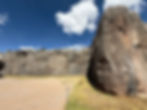
Plaza de Armas

Surrounded by shops, restaurants, the Cathedral of Cusco and other churches, Plaza de Armas is the beating heart of Cusco. June is an important and busy month as June 24th is the anniversary of Cusco's founding. That combined with the Solstice just a few days prior, is cause for celebration. Peruvians are very proud of their country and the residents of Cusco are equally proud of their city. So much so that there are celebrations on the square every day leading up to the 24th. Adults and children alike gather to watch as well as to participate. Fireworks can be heard at any hour of the day throughout the city.
Peru is known for its 55 varieties of corn among many other culinary delights. This float was being prepared for the parade later that day.

San Pedro Market

Just a few blocks from the Plaza de Armas, the San Pedro market is a bustling hub of activity. I visited around 8:00 am on a Sunday and surprisingly, most stalls were just setting up. Nevertheless, it was fun to walk around.

The flag of Cusco was omnipresent. It's called the rainbow flag because of its seven colorful stripes. It hung everywhere in Cusco, many times next to the flag of Peru.
I thoroughly enjoyed walking in the city, although dodging pedestrians and cars on the narrow lanes was at times challenging. The photo below was taken from inside our van as we were returning to the hotel one day. We laughed that even San Francisco can't compare!

Some streets were lined with steps which I can't say were any more helpful!

I actually saw a couple of intersections where lights were timed to allow cars to take turns traveling in opposite directions.

There was a lot of colonial architecture as in Lima.



Cristo Blanco stands high above Cusco and can be seen from almost everywhere in the city. It was given to the city in 1945 by Christian Palestinians out of gratitude for the city giving them refuge.
Some more photos of this interesting city.
A Word About Our Hotel and Travel Services
I booked the services of Inca Expert Travel for this trip. We normally travel completely independently, but we decided we needed the help and expertise of an in-country tour operator. I can't say enough about them. There were a lot of moving parts to this trip; planes, trains, automobiles...we weren't in one place very long. From the initial planning and tailoring of the itinerary to in-country transfers and tours, the staff and services were outstanding and there was not a glitch at any point.
The price of the package is partially dependent upon the class of hotel chosen. We decided to use the highest-end hotels and we weren't disappointed. Our hotel in Cusco was the Monasterio, A Belmond Hotel located less than a five-minute walk from the Plaza de Armas. A former monastery-turned-museum-turned hotel, it offers a peaceful oasis in the middle of bustling Cusco.

It's customary to be offered tea upon arrival in Cusco to help acclimate to the altitude. Often it's coca tea made from the coca plant which is said to provide nutritional and medicinal benefits. The Belmond offered us muña tea as we checked in, derived from another indigenous plant. I honestly can't say whether it worked, but I felt very little effect from the altitude. By the way, don't try to bring either back to the US; it won't provide the happy ending to your trip that you were hoping for!






The staff couldn't do enough for us and when we returned for our last day in Cusco after our night in Machu Picchu, they greeted us as friends.
These adorable dolls were to be hung on the door to ask either for the room to be cleaned or for quiet.

In our opinion, Cusco is a must-see destination in Peru. Its history and culture create a one-of-a-kind experience that no one should miss.
See also our posts on Lima, the Sacred Valley and Machu Picchu.
➜ Top Tips
As I said at the top of the post, Cusco isn't for the faint of heart. Whatever you can do to strengthen those leg muscles will help you navigate the city.
There is a rainy season and a dry season. Generally May through November is considered the dry season. Skies are clear and the temperature is pleasant. Of course, prices are higher then, too, so do your homework.
If you're not already working with a tour company, hire someone to take you on an all-day or half-day tour. There's a lot of history and a lot to see and you'll learn more with a knowledgeable guide.
If you want the Plaza de Armas to yourself, avoid June. On the other hand, if you want to join in the excitement, any day in June will work!

